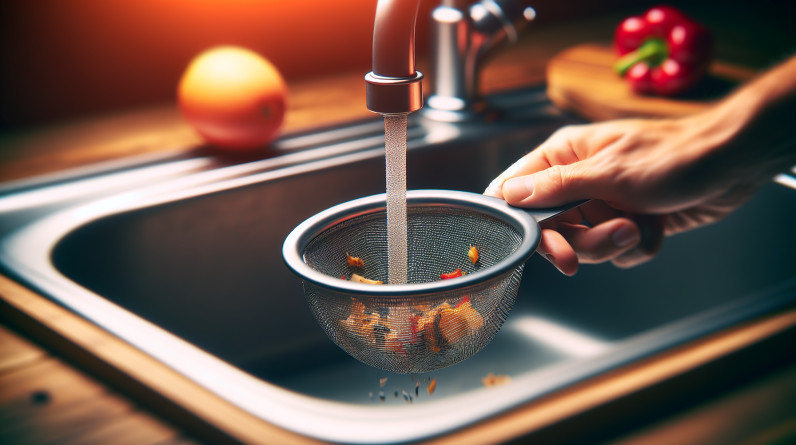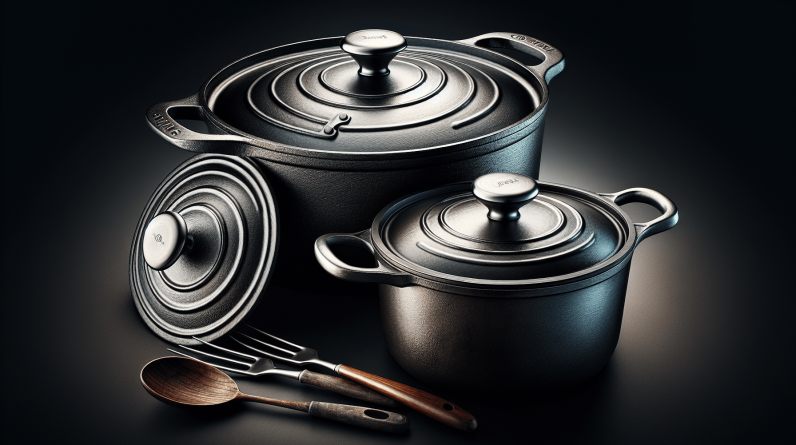Ceramic knives versus steel knives – a longstanding battle in the culinary realm. When it comes to choosing the perfect knife for our slicing and dicing needs, we find ourselves caught in a whirlwind of confusion. In this article, we will shed some light on this age-old debate, exploring the pros and cons of ceramic knives and steel knives, helping you make an informed decision in your pursuit of a razor-sharp kitchen companion.

Durability
Ceramic Knives
When it comes to durability, ceramic knives have a reputation for being incredibly strong and long-lasting. These knives are made from a high-density ceramic material, typically zirconium oxide, which is known for its exceptional hardness. This hardness allows ceramic knives to maintain their sharpness for a longer period of time, as they are less prone to dulling compared to steel knives. Additionally, ceramic knives are highly resistant to rust and corrosion, which further contributes to their durability. With proper care and maintenance, ceramic knives can remain in excellent condition for many years, making them a reliable choice for any kitchen.
Steel Knives
Steel knives, on the other hand, also boast impressive durability. The most common type of steel used in kitchen knives is stainless steel, which is resistant to rust and corrosion. Steel knives are generally known for their strength and ability to withstand heavy use. However, it is worth noting that the durability of steel knives can vary depending on the specific type of steel used and the manufacturing process. Some steel knives may require more frequent sharpening to maintain their cutting performance, which can affect their overall longevity. Nonetheless, with proper care and maintenance, steel knives can also last for a considerable amount of time.
Sharpness
Ceramic Knives
When it comes to sharpness, ceramic knives shine. The hardness of the ceramic material allows these knives to achieve an exceptionally sharp edge. This sharpness makes ceramic knives a pleasure to use in the kitchen, as they effortlessly glide through various ingredients. Furthermore, ceramic knives have the advantage of staying sharp for a longer period of time compared to steel knives. This means less frequent sharpening and a consistently high level of cutting performance.
Steel Knives
Steel knives are known for their sharpness as well, but they may require more frequent sharpening to maintain their edge. The sharpness of steel knives can vary depending on the specific type of steel used and the sharpening technique employed. While some steel knives may require more attention to maintain their cutting performance, many high-quality steel knives can achieve and maintain an exceptional level of sharpness. It is important to note that regular honing and sharpening are essential to keep steel knives at their sharpest.
Maintenance
Ceramic Knives
When it comes to maintenance, ceramic knives offer a hassle-free experience. Due to their high-density ceramic material, ceramic knives are resistant to staining and do not absorb odors from food. This makes cleaning them a breeze, as they can simply be rinsed with water and wiped dry. Additionally, ceramic knives do not require frequent sharpening, which saves both time and effort. However, it is important to handle ceramic knives with care, as they can be more prone to chipping or breaking if dropped or used on hard surfaces.
Steel Knives
Maintaining steel knives requires a bit more effort compared to ceramic knives. While stainless steel knives are resistant to staining and do not absorb odors, they can still require regular cleaning to prevent the build-up of food particles. Steel knives may need to be sharpened more frequently to maintain their cutting performance, which can involve using a sharpening stone or honing steel. Some steel knives may also require periodic oiling to prevent rust or corrosion. Proper care and maintenance are crucial for maximizing the lifespan of steel knives.
Corrosion and Stains
Ceramic Knives
One of the key advantages of ceramic knives is their resistance to corrosion and stains. The high-density ceramic material used in these knives is non-porous, which means it does not react with acidic foods or liquids. This makes ceramic knives an excellent choice for cutting fruits, vegetables, and other acidic ingredients without worrying about corrosion or leaving behind any metallic taste. Additionally, the non-porous nature of ceramic knives prevents them from absorbing stains, ensuring that they maintain their pristine appearance even after years of use.
Steel Knives
While stainless steel knives are generally resistant to corrosion, they are not completely immune to it. If steel knives are not properly dried after cleaning or if they come into contact with acidic foods for an extended period of time, they can develop small spots of corrosion. However, with regular cleaning and maintenance, stainless steel knives can usually resist corrosion effectively. Stains, on the other hand, can be more challenging to remove from steel knives, especially if they are deeply set. It is important to promptly clean and dry steel knives to minimize the risk of corrosion or stains.

Weight
Ceramic Knives
Ceramic knives are significantly lighter compared to steel knives. This lightweight characteristic makes them a popular choice for individuals who prefer a knife that is easy to handle and maneuver. The reduced weight of ceramic knives can make food preparation tasks less strenuous and can be especially beneficial for those with wrist or hand fatigue. The lighter weight also allows for greater precision and control when cutting, resulting in more precise and uniform slices.
Steel Knives
Steel knives, especially those made from high-quality stainless steel, tend to be heavier compared to ceramic knives. While this extra weight can provide a feeling of solidity and sturdiness, it may require more effort when using the knife for an extended period of time or for tasks that require a lot of slicing or chopping. The weight of steel knives can also vary depending on the thickness and size of the blade. Some individuals may prefer a slightly heavier knife for certain tasks, as it can give a sense of stability and control.
Ergonomics
Ceramic Knives
Ceramic knives are often praised for their ergonomic design. The lightweight nature of ceramic knives, combined with their typically streamlined and well-balanced construction, makes them comfortable to hold and use for extended periods. The ergonomic handles of ceramic knives are shaped to fit the contours of the hand, providing a secure grip and reducing the risk of slipping or discomfort. This makes ceramic knives a great choice for individuals who value comfort and ease of use in their kitchen tools.
Steel Knives
Steel knives also come in a variety of ergonomic designs, with handles that are engineered to provide a comfortable and secure grip. The weight and balance of steel knives can contribute to their overall ergonomics, as a well-balanced knife can make cutting tasks feel more effortless. It is important to choose a steel knife that feels comfortable in your hand and suits your individual grip preferences. Ergonomics play a significant role in ensuring a pleasurable and efficient cutting experience.

Versatility
Ceramic Knives
Ceramic knives excel in specific tasks that require precision and delicate slicing. They are particularly well-suited for slicing fruits, vegetables, and boneless meats. The exceptional sharpness of ceramic knives allows for effortless slicing and reduces the risk of crushing or tearing delicate ingredients. However, due to their brittle nature, ceramic knives are not recommended for tasks that involve heavy-duty cutting, such as butchering large cuts of meat or chopping through bones. It is best to use ceramic knives for tasks that align with their strengths to maximize their versatility.
Steel Knives
Steel knives, with their wide range of designs and blade shapes, offer great versatility in the kitchen. Whether it’s slicing, dicing, chopping, or even carving, steel knives can handle a wide variety of tasks. They are suitable for both delicate and heavy-duty cutting, making them an all-around tool for different types of ingredients. With the right type of steel knife, you can have the versatility to tackle various food preparation tasks in your kitchen.
Pricing
Ceramic Knives
Ceramic knives tend to be more expensive than steel knives. The advanced manufacturing techniques and the high-quality ceramic material used in their production contribute to their higher price point. However, it is important to consider the long-term value of ceramic knives. Their exceptional durability and sharpness can offset the initial investment, as they can last for many years without the need for frequent sharpening or replacement. Ultimately, the pricing of ceramic knives reflects their quality and the benefits they offer in terms of performance and longevity.
Steel Knives
Steel knives generally have a wider range of pricing options available compared to ceramic knives. They come in various price points depending on the quality and type of steel used, as well as the craftsmanship. While high-quality steel knives can be more expensive, there are also budget-friendly options that still offer decent performance. The pricing of steel knives allows for greater accessibility and flexibility in choosing a knife that suits your budget and specific needs.
Safety
Ceramic Knives
Ceramic knives are known for their exceptional sharpness, and this sharpness can be both an advantage and a potential safety concern. The razor-like edge of ceramic knives requires careful handling and attention to ensure safe usage. It is crucial to use cutting boards made of materials that are gentle on the knife’s edge, such as wood or plastic, to prevent chipping or breaking. Additionally, using proper cutting techniques and avoiding lateral force can minimize the risk of accidents. Overall, as long as ceramic knives are handled with care and used in line with their intended purpose, they can be safely incorporated into your kitchen.
Steel Knives
Steel knives also require proper handling and safe practices. While steel knives may not be as prone to chipping or breaking compared to ceramic knives, they can still cause accidents if not used correctly. It is important to use a cutting board that provides stability and avoids unnecessary strain on the wrist. Regularly honing and sharpening steel knives can help maintain their cutting performance and reduce the risk of slips or accidents. Responsible and careful use of steel knives ensures maximum safety in the kitchen.
Conclusion
In conclusion, both ceramic knives and steel knives have their own unique strengths and considerations. Ceramic knives offer exceptional durability, long-lasting sharpness, easy maintenance, and resistance to corrosion and stains. They are lightweight, ergonomic, and excel in precision cutting tasks. However, their versatility may be limited in heavy-duty cutting scenarios, and careful handling is required to avoid chipping or breaking. On the other hand, steel knives offer a wide range of designs, versatility, and varying degrees of sharpness. They require regular maintenance, but with proper care, they can also provide long-lasting performance. Choosing between ceramic knives and steel knives ultimately depends on your specific needs, preferences, and budget. Both options can be excellent additions to your kitchen arsenal, enhancing your culinary experience and making food preparation a breeze.










